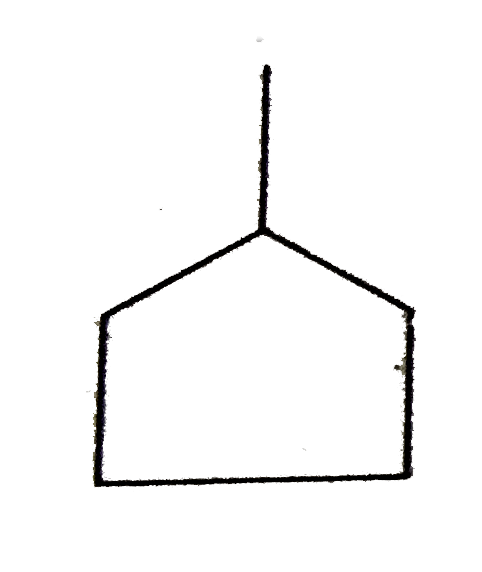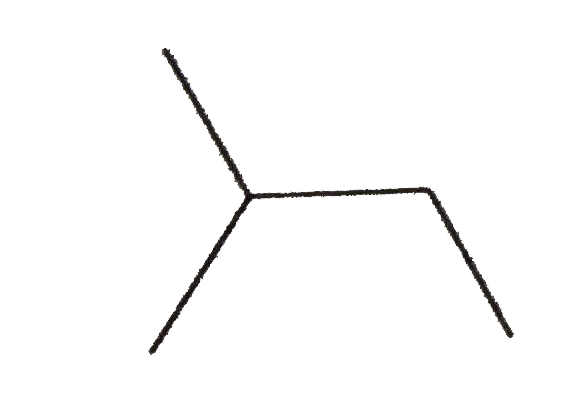Ferric Ion+Mono valent anion(element having atomic Number=53)→x+y
x and y are-
Fe0 & Iodate ion
Fe+2 & Per iodate ion
Fe2+ & I2
Fe2+ & FeI3
The correct Answer is:C
To solve the question, we need to identify the products formed when a ferric ion (Fe³⁺) reacts with a monovalent anion. Let's break down the solution step by step.
Step 1: Identify the Ferric Ion
The ferric ion is represented as Fe³⁺. This ion has a charge of +3.
Step 2: Identify the Monovalent Anion
A monovalent anion typically has a charge of -1. Common examples include halides like fluoride (F⁻), chloride (Cl⁻), bromide (Br⁻), and iodide (I⁻). Given that the atomic number 53 corresponds to iodine (I), we will consider iodide (I⁻) as our monovalent anion.
Step 3: Write the Reaction
The reaction between the ferric ion and the iodide ion can be written as:
Fe3++I−→x+y
Step 4: Determine the Products
In this reaction, the ferric ion (Fe³⁺) can be reduced to ferrous ion (Fe²⁺), and the iodide ion (I⁻) can be oxidized to iodine (I₂). The balanced reaction can be represented as:
2Fe3++2I−→2Fe2++I2
From this reaction, we can identify:
- x=Fe2+ (ferrous ion)
- y=I2 (iodine)
Final Answer
Thus, the values of x and y are:
- x=Fe2+
- y=I2
The ferric ion is represented as Fe³⁺. This ion has a charge of +3.
A monovalent anion typically has a charge of -1. Common examples include halides like fluoride (F⁻), chloride (Cl⁻), bromide (Br⁻), and iodide (I⁻). Given that the atomic number 53 corresponds to iodine (I), we will consider iodide (I⁻) as our monovalent anion.
The reaction between the ferric ion and the iodide ion can be written as:
Fe3++I−→x+y
In this reaction, the ferric ion (Fe³⁺) can be reduced to ferrous ion (Fe²⁺), and the iodide ion (I⁻) can be oxidized to iodine (I₂). The balanced reaction can be represented as:
2Fe3++2I−→2Fe2++I2
- x=Fe2+ (ferrous ion)
- y=I2 (iodine)
Thus, the values of x and y are:
- x=Fe2+
- y=I2
Topper's Solved these Questions
- CHEMISTRY AT A GLANCEBOOK - ALLENCHAPTER - CHEMISTRY AT A GLANCEEXERCISE - ORGANIC CHEMISTRY
472 Videos
- CHEMISTRY AT A GLANCEBOOK - ALLENCHAPTER - CHEMISTRY AT A GLANCEEXERCISE - ORGANIC CHEMISTRY
472 Videos
- Chemical EquilibriumBOOK - ALLENCHAPTER - Chemical EquilibriumEXERCISE - All Questions
30 Videos
- ELECTROCHEMISTRYBOOK - ALLENCHAPTER - ELECTROCHEMISTRYEXERCISE - EXERCISE -05 [B]
38 Videos
Similar Questions
An element has atomic number 29. it belongs to x period any y group. Given value of 2x+y:
View SolutionIdentify the group (in Modern Peridic Table) and valency of a hypothetical elemt having atomic number 119. if group number is x and valency is y. Given the the value of x+y.
View SolutionConsider the following reaction
 Cl2−−→hv total number of mono chlorinated product =x
Cl2−−→hv total number of mono chlorinated product =x
 Cl2−−→hvtotal number of mono chlorinated(Exluding stereoisomer)product=y
Cl2−−→hvtotal number of mono chlorinated(Exluding stereoisomer)product=y
identify value of x+y?
View SolutionAn element X (atomic number 17) reacts with an element Y (atomic number 20) to form a divalent halide
(a) Where in the periodic table are elements X and Y placed ?
(b) Classify X and Y as metal (s), non-metal (s) or metalloid (s)
(c) What will be the nature of oxide of element Y ? Identify the nature of bonding in the compound formed
(d) Draw the electron dot structure of the divalent halide.
View SolutionAtomic number of Ag is 47. In the same group the atomic numbers of elements placed above and below Ag in long form of periodic table will be x and y respectively. Given the value fo (x+y)/12.
View Solution
Where a,b,c,d,e,f,g,h ar 3rd period elements. If difference between atomic number of elements b and e is x and difference between atomic number of elements c and f is y. What is the value of x−y.
View SolutionElements X, Y and Z have atomic numbers 6, 9 and 12 respectively. Which one :
forms an anion
View SolutionUp to atomic number 19,if'Xnumber elements are having positive electron gain enthalpy (EGE1) andY number of elements are having negative electron gain enthalpy (EGE1) then find the value of XY?
View SolutionElements X, Y and Z have atomic numbers 6, 9 and 12 respectively. Which one :
forms a cation
View SolutionIf the atomic number of an element X is 17, then what will be the atomic number of the element lying in the same group as that of X but in the fifth period?
View Solution
